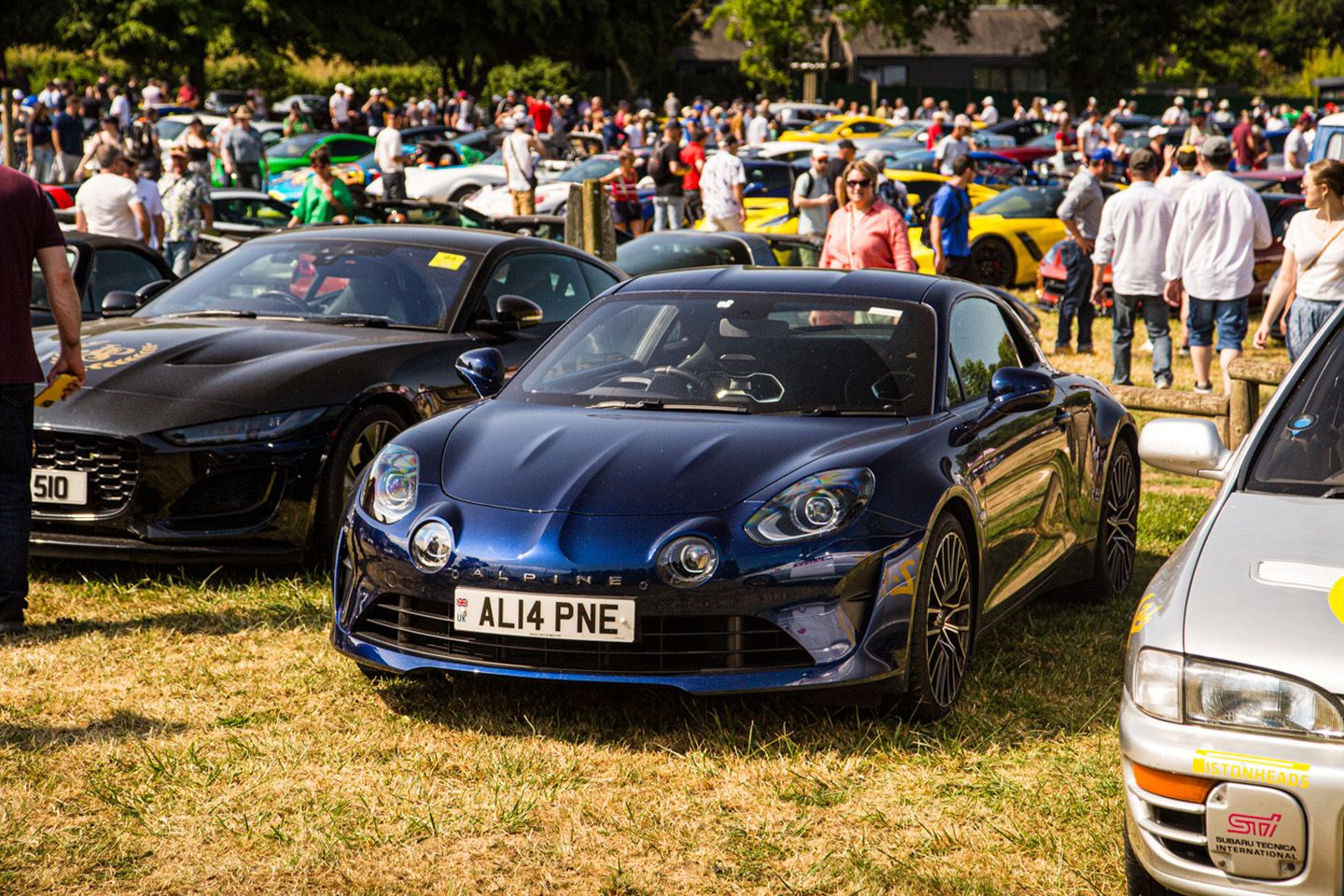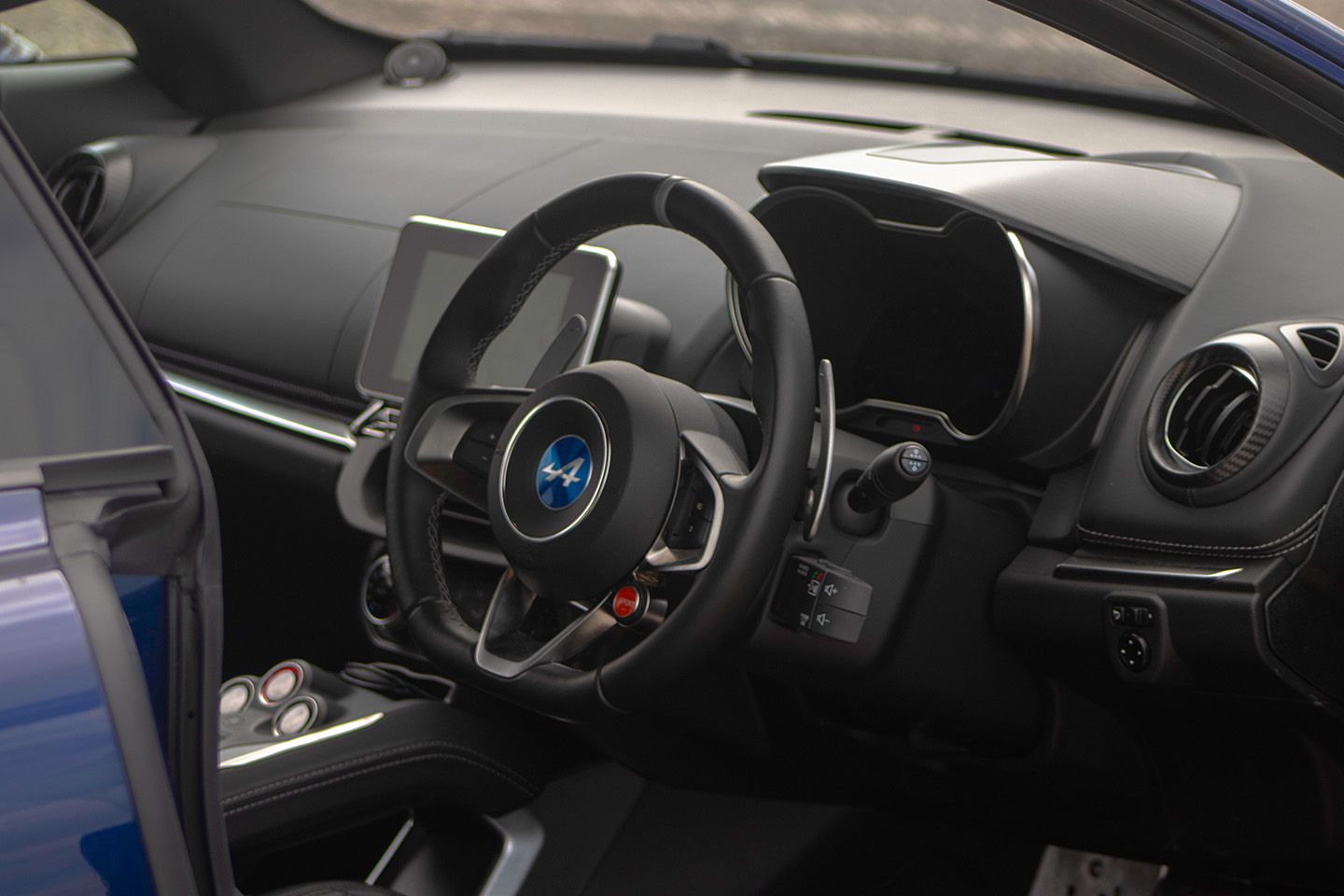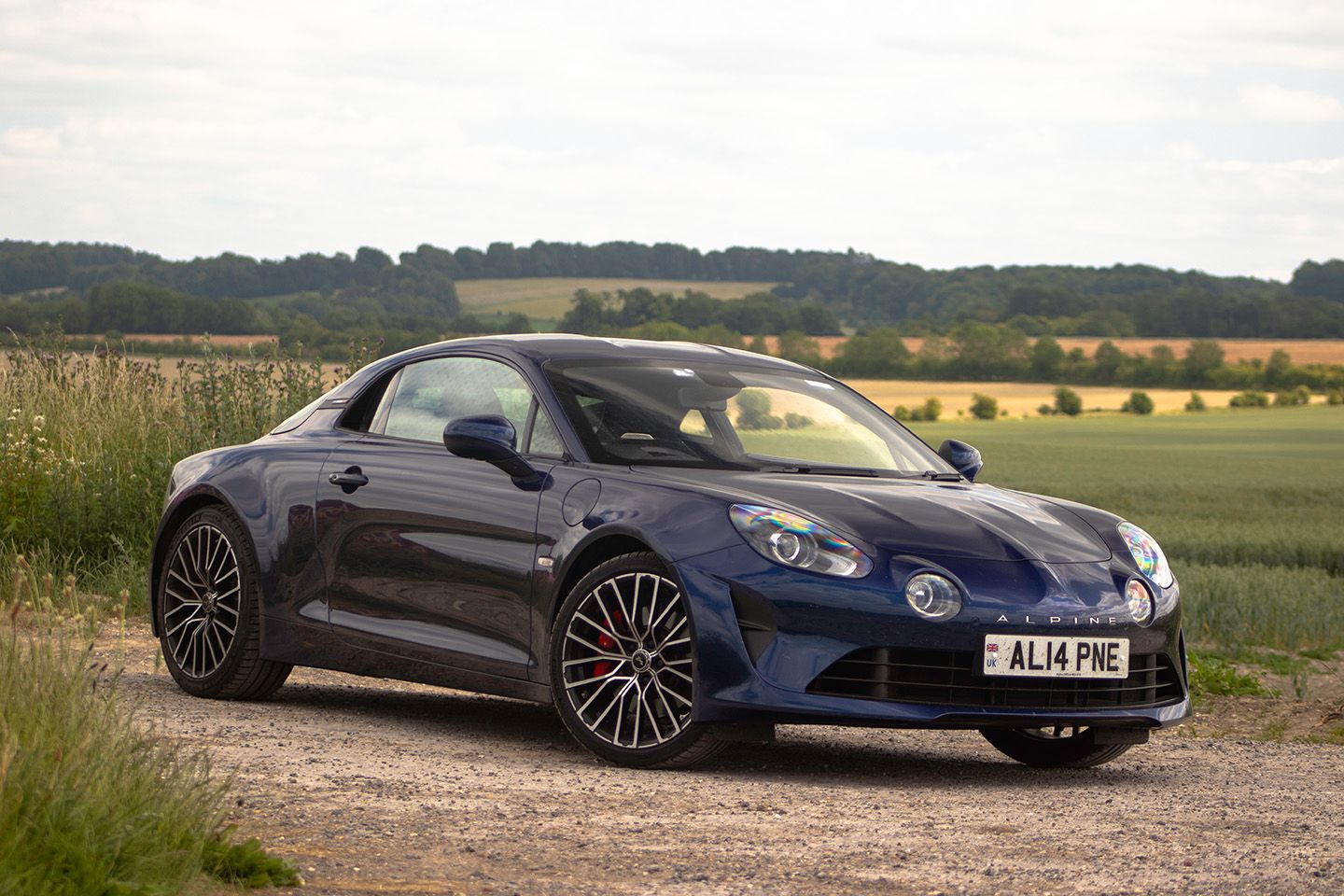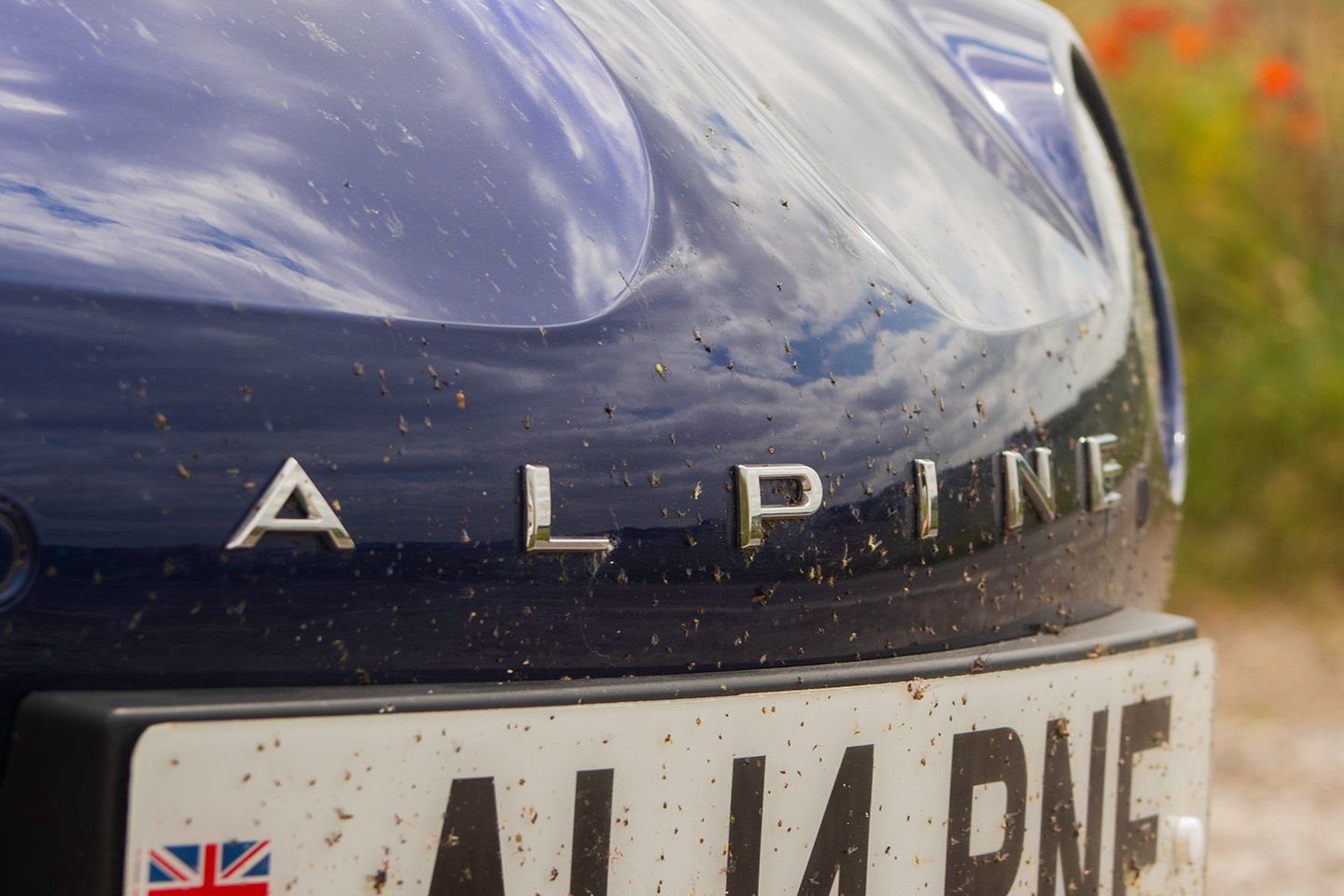
Alpine has been easing us into the idea that the next A110 will be electric. The French marque made its battery-powered intentions clear back in 2021 when it announced that it would become Renault’s new performance division, effectively merging with Renault Sport at the firm’s Dieppe facility, and that work was already underway on an EV successor to the A110. Since then, we’ve seen the E-ternité (essentially a battery-powered version of the current A110), the A290 electric hot hatch and the recently unveiled A390 crossover. The new A110 is not far behind.
So the current model as we know it isn’t long for this world, and Alpine’s gradual transition from petrol to battery power hasn’t made its impending retirement any easier. Especially for yours truly, having somehow managed to dodge driving the sports car reboot for its near-decade-long lifecycle. I say ‘dodge’ – it’s not like I’ve been avoiding it. The A110 is a confirmed great, with Matt P hailing it as “sensational” in his PistonHeads review, and possibly even more fun than the 718 Cayman. Which is obviously saying something. So with time a-wasting and a ticket to last weekend’s 24 Hours of Le Mans, now seemed like the perfect time to finally get behind the wheel and see what I’ve been missing out on for the last eight years.
Admittedly, the trip down to the Circuit de la Sarthe isn’t especially well suited to the A110’s established talents. Once you get off the train at Calais, it’s pretty much a straight, 260-odd-mile trek on delightfully smooth roads with not so much as a drain cover in sight. However, skirt the Rouen low-emission zone and you’ll find some nice twisty back roads with only the occasional, refreshingly well-signposted speed camera to contend with. The car in question is a bog-standard A110, albeit with snazzier Abyss Blue paint, those intricate ‘grand prix’ 18-inch alloys and an active sports exhaust. Yes, there are racier points of entry into A110 ownership, including the GTS and carbon-wheeled R, but the base model has long been regarded as the sweetest of the lot (and will likely be the most comfortable over a seven-hour drive) so that’s what we chose.


Truthfully, it only takes a few minutes to realise why the A110 is as lauded as it is. It’s just so wonderfully agile, and feels every bit as light as the 1,102kg kerbweight suggests. The steering, while on the light side, provides enough feedback to have a good understanding of what the front end is doing, and a quick flick of the wheel results in the nose instantly pointing where you want it to without feeling overly darty. Enter a corner with a bit more commitment and you’ll feel the A110 rotating right beneath you, with body lean kept in check all the while. Surprisingly, the A110 makes do sans limited-slip diff to further sharpen up the front end.
What takes a bit more time to get used to is the 1.8-litre turbo four behind you. You’ll remember that it’s the same engine that powered the final Renault Megane R.S., paired with a seven-speed dual-clutch gearbox. Yes, it’s disappointing that Alpine never got around to fitting a manual (it would simply cost too much to develop, apparently), but the flappy-paddle ‘box does feel nice and snappy when you pick up the pace. The only downside to it is the positioning of the paddles themselves, both that they’re fixed to the steering column and don’t extend towards the lower half of the wheel, which I found makes shifting while turning a bit fiddly at low speeds. As for the engine, it’s a little pedestrian when pottering around and doesn’t have the attitude of the 718’s four-pot boxer – although revving it out delivers a sound not far off that of a touring car. And while the base car’s 252hp may not sound like much, it’s quick enough to feel like you’re properly on it between B-road corners.
Question is, does it tick the GT box? For the most part, emphatically yes. The Sabelt bucket seats are a comfy place to spend a four-hour stint from Calais to Le Mans, and it’ll comfortably return an mpg in the mid-40s while doing so. That said, it did occasionally seem a bit flighty while cruising, the wheel tugging left and right when conditions turned blustery. Passing lorries would also upset the front end more than you might expect, meaning you’d need to grip the wheel a little tighter and ‘brace for turbulence’ when passing the cab.


Anyway, my first port of call before the 4pm kick-off on Saturday would be our Friday Service at the Classic British Welcome, where the A110 proved a huge hit with the local crowd. Surprisingly so, in fact, when you consider it flies under the radar somewhat back home, without a bazillion winglets and a gopping mouth. But the car’s retro silhouette and sleek lines prove a hit with French car lovers – meaning it’s a bit of a shame, then, to later hear Alpine’s design boss say they’ll be looking to up the aggression for the A110’s successor. Speaking ahead of the race, Antony Villain noted: “Some people don’t buy it because it’s cute, and that’s a problem. So, especially in the UK and Germany, we are missing a bit of assertiveness, aggressivity, and sometimes the froggy aspect of the A110 [is putting customers off].”
So you can expect a “sharper” and less-froggy A110 successor when it arrives next year. Villain and Sovany Ang, head of Alpine Performance, were tight-lipped on further details, which is no great surprise given CEO Philippe Krief let slip that the Alpenglow concept would make production as a V6 hybrid supercar. Villain did, however, reveal that domestic government policy, not customer demand, was the driver behind the A110’s electric switch. “ICE engine for sports cars in France, for instance, is €60,000 malus (France’s car tax for performance combustion vehicles). Basically, Porsche today don’t sell any cars in France anymore. I think we have 98 per cent of the market, and in Europe it’s 45 per cent of the market.”
Needless to say, it’s keen to hang on to that share, so it has to make the electric A110 work. Lightness is very much front of mind, says Ang, as it has been since the E-ternité concept. Regardless, it’ll be a great shame when the overrun crackles fall silent and the weight inevitably creeps upwards (whether Alpine will hit its 1,400kg target is yet to be seen), but a bespoke aluminium chassis is certainly a good place for its successor to start from. For now, you can still pick up an A110 brand new, or you could save yourself a few quid by picking this 481-mile Premiere Edition for £41,995. Not that you need much convincing, because we’ve been hearing for years about how brilliant Alpine’s sports car is – but take this as another glowing testimonial. It really is sensational.
SPECIFICATION | ALPINE A110
Engine: 1,798cc four-cylinder, turbocharged
Transmission: seven-speed dual-clutch auto, rear-wheel drive
Power (hp): 252@6,000rpm
Torque (lb ft): 236@2,000rpm-4,800rpm
0-62mph: 4.5 seconds
Top speed: 155mph
Weight: 1,102kg
MPG: 40.4-42.2 WLTP
CO2: 152-158g/km
Price: £55,160

